Chuck at GunLab recently posted on a cutaway L1A1 British FAL; since I have been studying the FAL recently, I was naturally drawn to the post. Unfortunately, Chuck’s coverage is somewhat spartan, and the images fairly low resolution, so I went hunting for more. I found quite a few great images of cutaway FALs, which I have shared below:
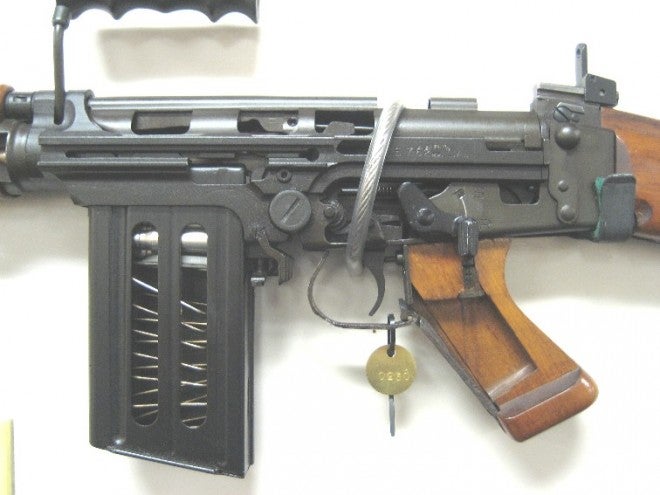
A cutaway FAL of the same basic type shown in Chuck’s post. This one is displayed in an Australian museum, and is marked “L1A1”. Image source: FALFiles.com
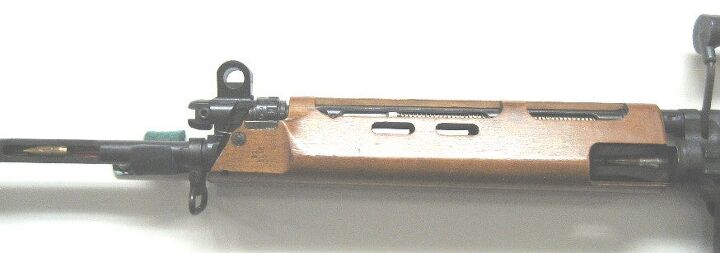
Early FAL prototypes had uncovered gas tubes, which got very hot during shooting. This was quickly rectified with a full-profile handguard, as seen here. Image source: FALFiles.com
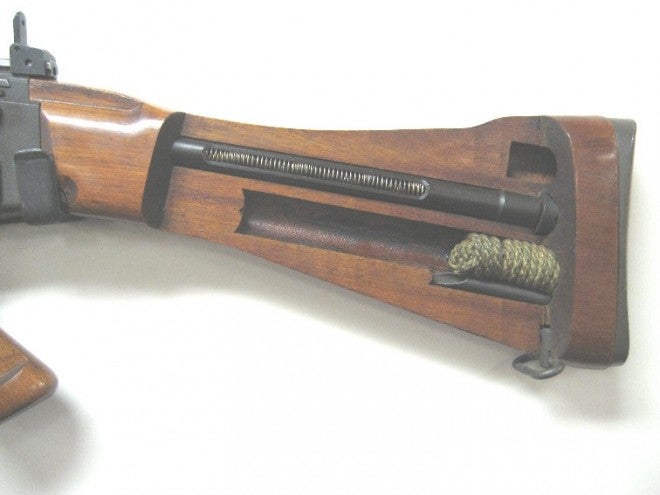
The recoil spring in the stock was a source of much consternation among American testers, and is one of the factors that led to the rejection of the FAL in favor of what would become the M14. Maintenance of this element of the rifle did not live up to American standards. Image source: FALFiles.com
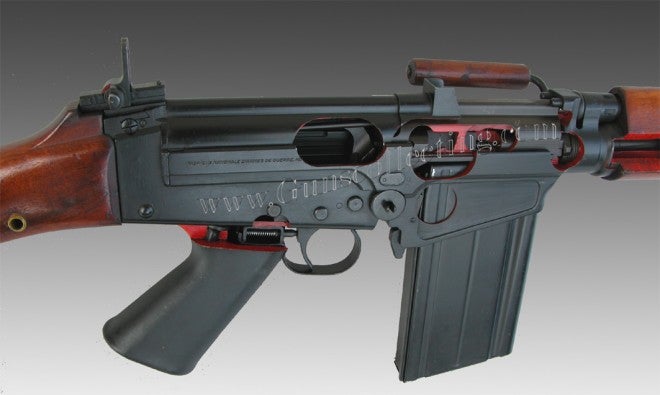
An L26A1 Instructional Rifle. Whether these were made from L1A1s and then re-roll-marked, or whether they were factory modifications is unknown to me. They are, however, qualitatively different in both form and markings to the “L1A1” marked cutaway shown above. Image source: gunscollecting.com
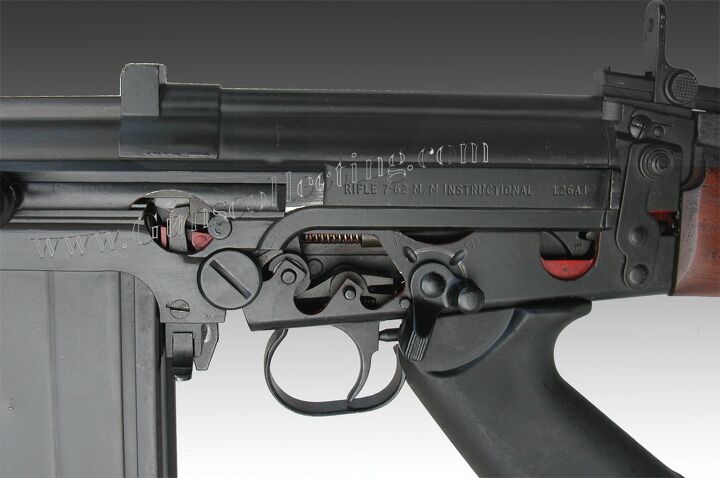
Much less relief is evident in the L26A1 cutaway. This model highlights only the essential operating groups. Image source: gunscollecting.com
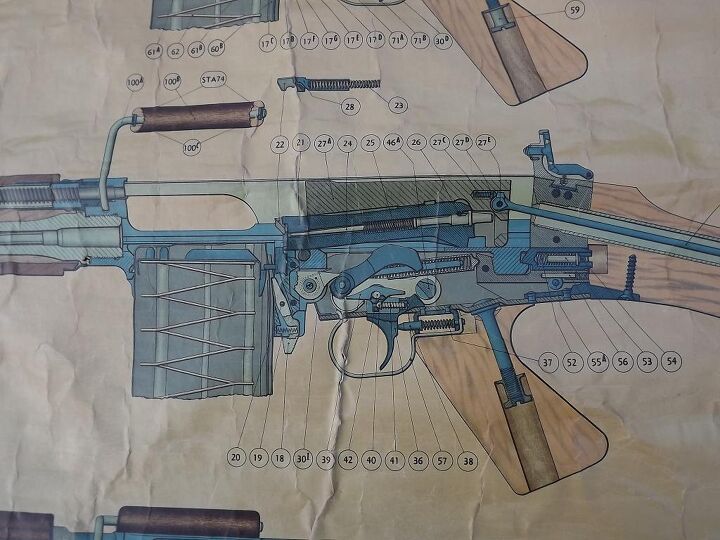
A full cutaway factory print of the FN FAL rifle. The relative complexity of the FAL can be seen in this image. This drawing is present in the liner of The FAL Rifle, by Collector Grade Publications. Image source: FALFiles.com

Due to the low resolution, it is very difficult to see detail, but this image appears to be of another L26A1 Instructional Rifle. The wider angle gives a better sense of the whole weapon. Note the early stripper clip guide equipped dust cover, as well as the very spartan section work done on the rifle. Image source: FALFiles.com

Besides the fire control group, no sections are apparent on this side of the L26A1 Instructional Rifle. Image source: FALFiles.com
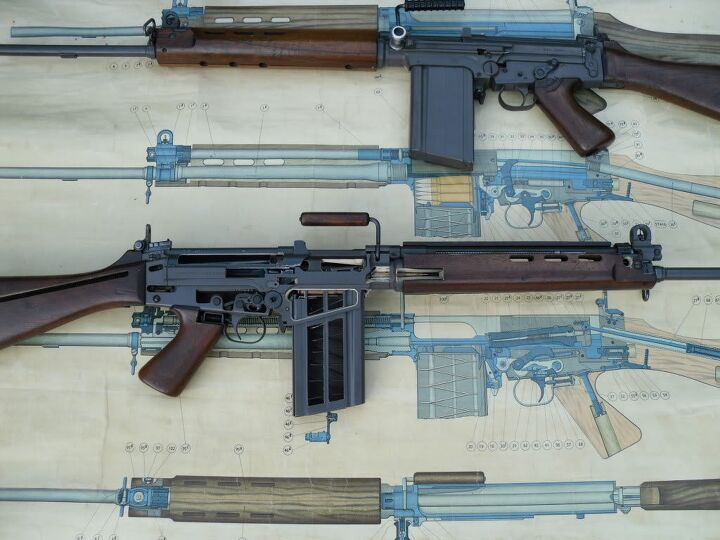
This cutaway is reportedly a Fabrique Nationale factory specimen. The stripper clip guides indicate it is an L1A1; early L1A1s were produced by FN before production switched to British factories in 1957. Image source: FALFiles.com
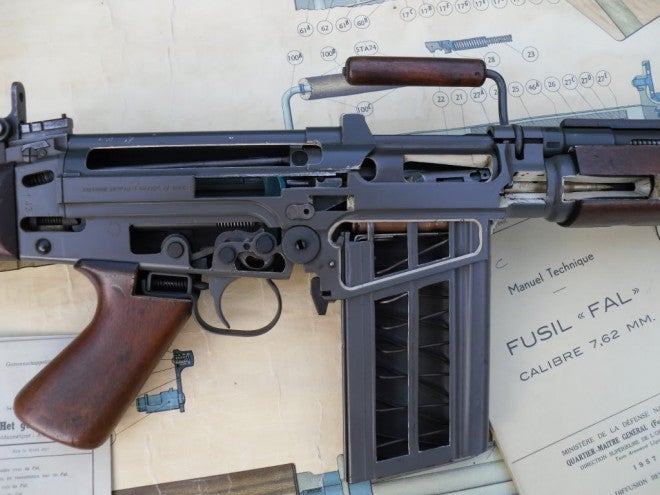
This cutaway shows the “rat tail” guide rod; despite the short bolt carrier of the FAL, the engineers at FN thought it best to move the recoil spring and guide to the stock, and this pivoting connector was used to transfer the rearward force of the bolt to that spring. Image source: FALFiles.com
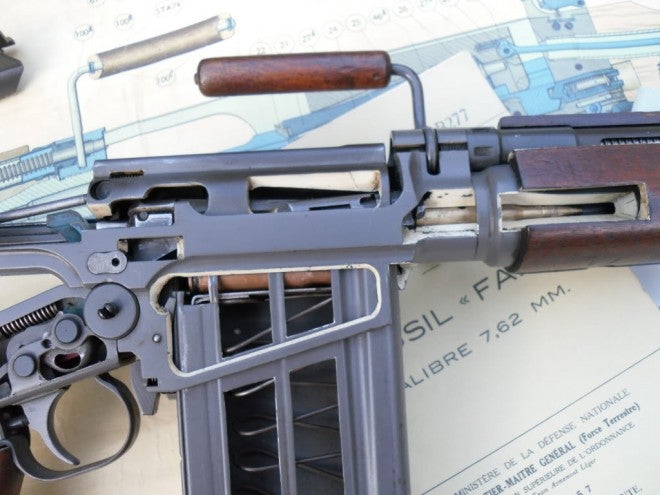
A closer shot of the FAL cutaway. A dummy round is placed in the chamber, and a few dummy rounds are present in the magazine, as well. Image source: FALFiles.com
While the FAL proved to be a major success story, its rejection by the USA highlighted some of its limitations. It was a complex design, and required more than double the number of operations to produce than the US standard issue rifle of the time, the M1 Garand (this, however, didn’t necessarily translate into higher cost – the M14 and FAL were both about 10% more expensive than the M1). The rifle was heavy – about a pound heavier than the US T44E4, though the production M14 would close that gap somewhat. Finally, early iterations handled sand and cold poorly; these two drawbacks being alleviated through innovations like sand-cut bolts, a stronger extractor design, and refinements to the gun’s operating cycle.
EDIT: Chuck has posted some more pictures of a cutaway FAL over at GunLab. Check them out!
 Your Privacy Choices
Your Privacy Choices